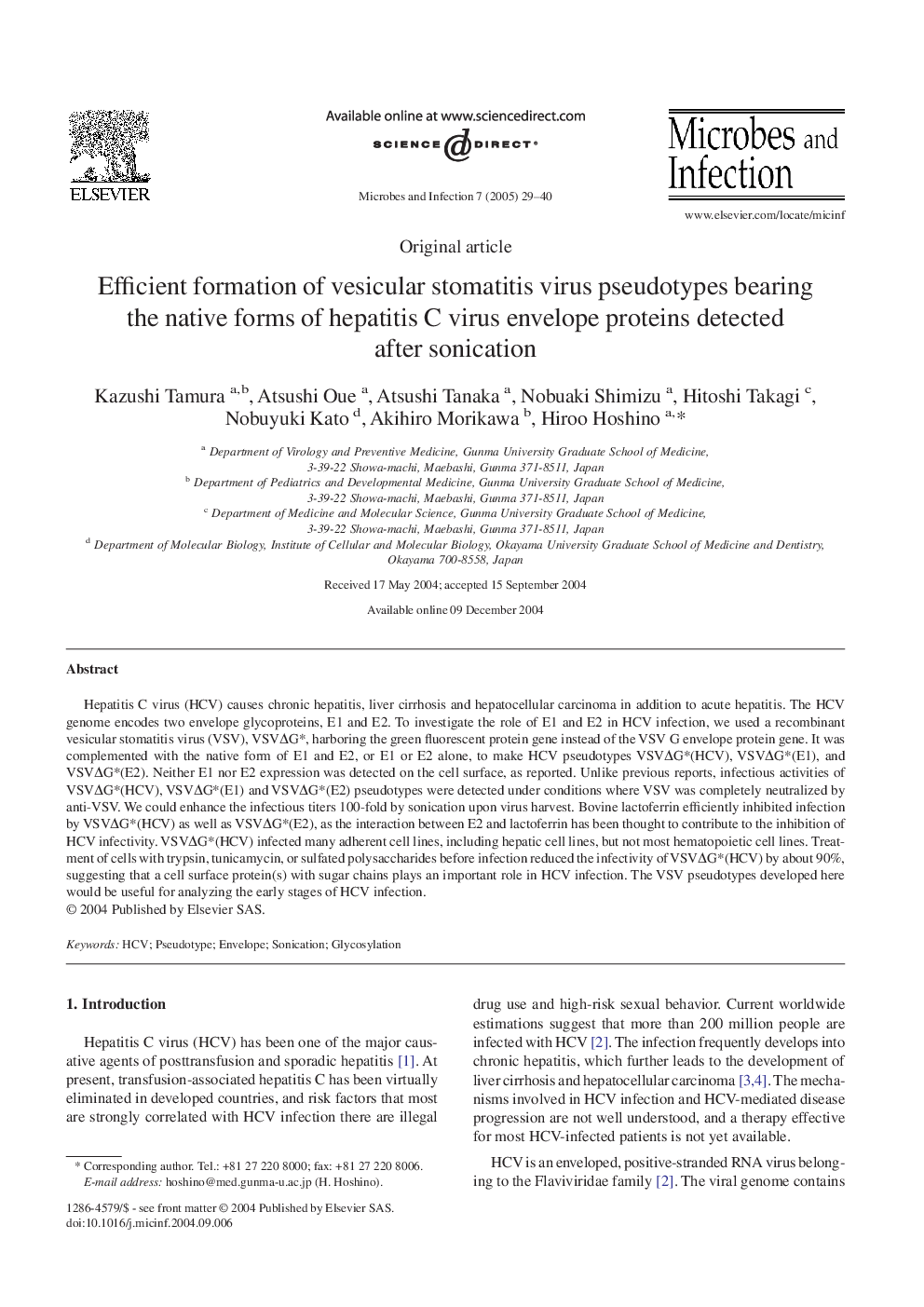| Article ID | Journal | Published Year | Pages | File Type |
|---|---|---|---|---|
| 9283041 | Microbes and Infection | 2005 | 12 Pages |
Abstract
Hepatitis C virus (HCV) causes chronic hepatitis, liver cirrhosis and hepatocellular carcinoma in addition to acute hepatitis. The HCV genome encodes two envelope glycoproteins, E1 and E2. To investigate the role of E1 and E2 in HCV infection, we used a recombinant vesicular stomatitis virus (VSV), VSVÎG*, harboring the green fluorescent protein gene instead of the VSV G envelope protein gene. It was complemented with the native form of E1 and E2, or E1 or E2 alone, to make HCV pseudotypes VSVÎG*(HCV), VSVÎG*(E1), and VSVÎG*(E2). Neither E1 nor E2 expression was detected on the cell surface, as reported. Unlike previous reports, infectious activities of VSVÎG*(HCV), VSVÎG*(E1) and VSVÎG*(E2) pseudotypes were detected under conditions where VSV was completely neutralized by anti-VSV. We could enhance the infectious titers 100-fold by sonication upon virus harvest. Bovine lactoferrin efficiently inhibited infection by VSVÎG*(HCV) as well as VSVÎG*(E2), as the interaction between E2 and lactoferrin has been thought to contribute to the inhibition of HCV infectivity. VSVÎG*(HCV) infected many adherent cell lines, including hepatic cell lines, but not most hematopoietic cell lines. Treatment of cells with trypsin, tunicamycin, or sulfated polysaccharides before infection reduced the infectivity of VSVÎG*(HCV) by about 90%, suggesting that a cell surface protein(s) with sugar chains plays an important role in HCV infection. The VSV pseudotypes developed here would be useful for analyzing the early stages of HCV infection.
Related Topics
Life Sciences
Immunology and Microbiology
Immunology
Authors
Kazushi Tamura, Atsushi Oue, Atsushi Tanaka, Nobuaki Shimizu, Hitoshi Takagi, Nobuyuki Kato, Akihiro Morikawa, Hiroo Hoshino,
